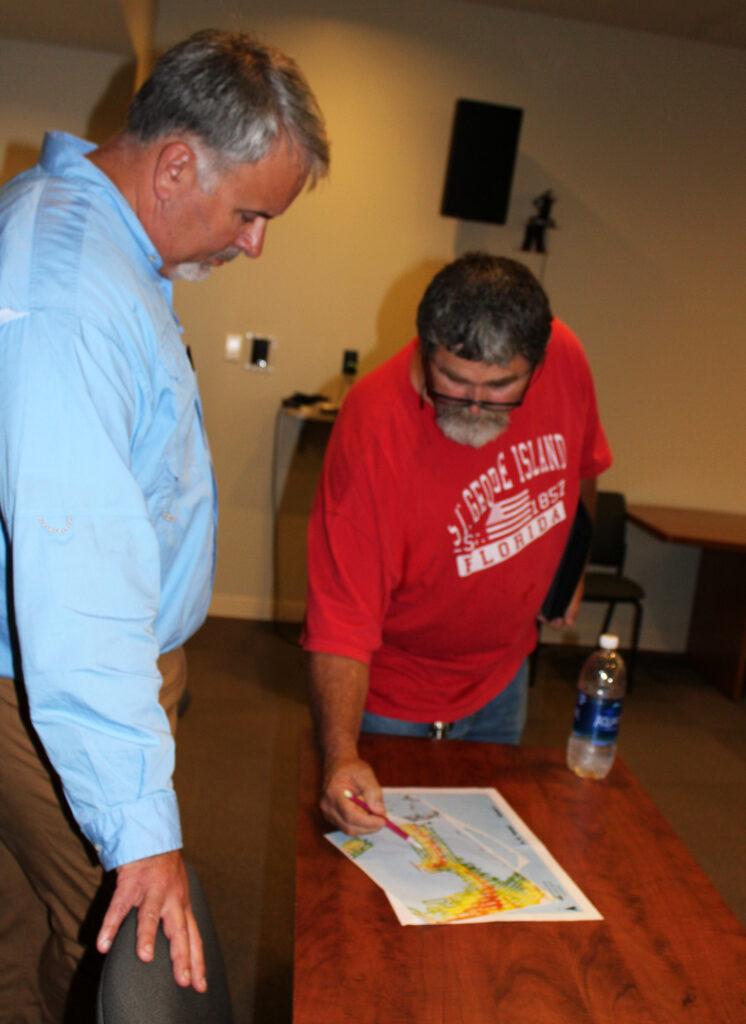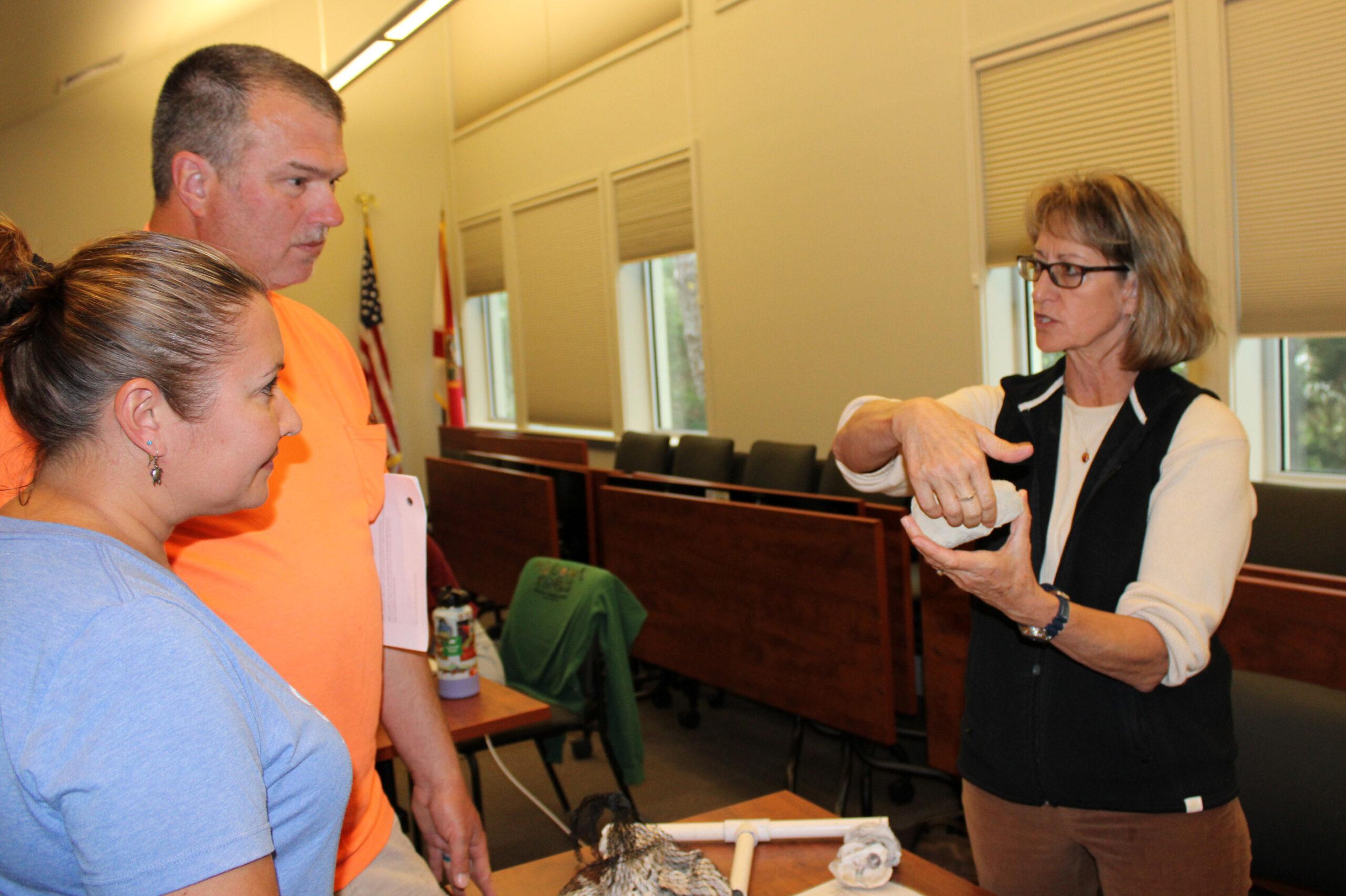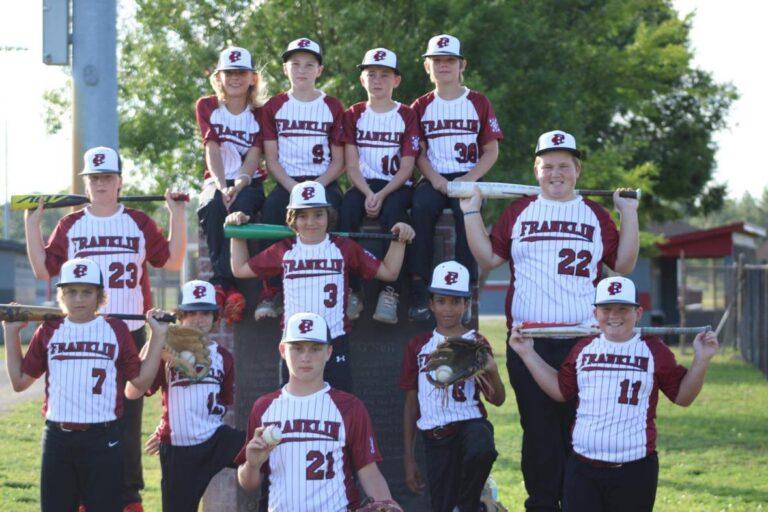Oyster researchers reach out to the public
The scene was a lot less confrontational last week at the Apalachicola National Estuarine Research Reserve as Florida State University greeted the public with details of the work it has been doing with the money it’s received from Triumph Gulf Coast.
Several members of the Seafood Work And Waterman’s Association, including its president Wayne Williams were on hand to interact with a host of FSU leaders along with representatives of the Florida Fish and Wildlife Conservation Commission.
Dr. Sandra Brooke, who is in charge of the Apalachicola Bay System Initiative at the Florida State University Coastal and Marine Lab, was on hand to share the findings of the experimental reefs, which are determining which lime rock is best to use.

She said that the larger sizes, five to seven inches, are best, because they give space between them them help resist the efforts of predators to eat the small oysters. That, plus financial and availability issues regarding the use of shell, are factors in determining which types and sizes that FWC will use when it comes time to spend about $10 million in upcoming National Fish and Wildlife Federation monies to build up the reefs.
FWC, represented by Devin Resko, the marine biologist directing the agency’s Apalachicola Bay restoration effort, and Jon Creamer, the northwest regional director, had a table at the casual event as well, making themselves available for questions on the upcoming research effort.
Details of those sites were shared on a computer screen by FSU field technician Lillie Bradshaw, whose screen detailed specifics regarding who has put out shell where, by a handful of agencies over the last decade or so.
Work on this reef-building has been funded by the Florida Department of Agriculture and Consumer Services, the United State Environmental Protection Agency’s National Resource Damage Assessments, National Fish and Wildlife Federation. RESTORE Act monies forthcoming after the 2010 BP oil spill, and CareerSource.
One aspect of FSU’s work has been creating an oyster hatchery at the Florida Florida State University Coastal and Marine Lab, solely for the purpose of producing oyster spat (juveniles) on shell, which can be placed on the restoration experiments to see whether this approach can ‘kick-start’ oyster habitat recovery.
Jared Fuqua, the lab’s director of education and outreach, shared a display of the brood stock, and how the lab has come together under the direction of Joel Trexler, Ph.D., who directs the lab and is a co-investigator for the $8 million ABSI grant. Trexler was on hand for the forum.
Fuqua said two Franklin County students, Landen Millender and Hayden Mock, now work on paid positions alongside graduate students at the lab at St. Teresa. They became introduced to the lab through their work as interns with the Conservation Corps of the Forgotten Coast, whose Oyster Corps has an ongoing role with ABSI.
Creamer said the next big step in FWC’s work will be in securing a contractor to handle a multi-million dollar contract to handle the distribution of rock and shell for the rejuvenation of the experimental oyster reefs. He said that work should be finished by October.




Meet the Editor
David Adlerstein, The Apalachicola Times’ digital editor, started with the news outlet in January 2002 as a reporter.
Prior to then, David Adlerstein began as a newspaperman with a small Boston weekly, after graduating magna cum laude from Brandeis University in Waltham, Massachusetts. He later edited the weekly Bellville Times, and as business reporter for the daily Marion Star, both not far from his hometown of Columbus, Ohio.
In 1995, he moved to South Florida, and worked as a business reporter and editor of Medical Business newspaper. In Jan. 2002, he began with the Apalachicola Times, first as reporter and later as editor, and in Oct. 2020, also began editing the Port St. Joe Star.